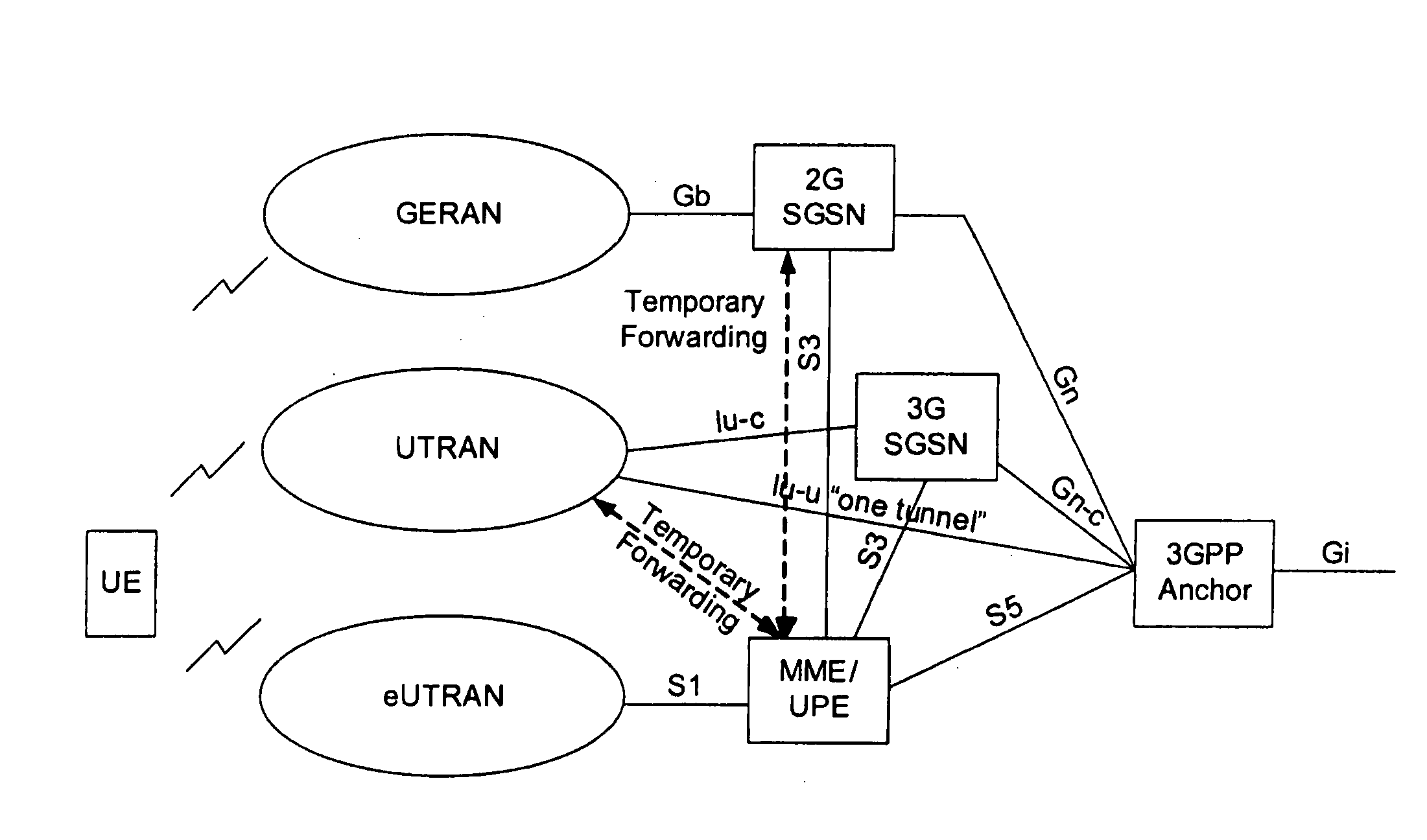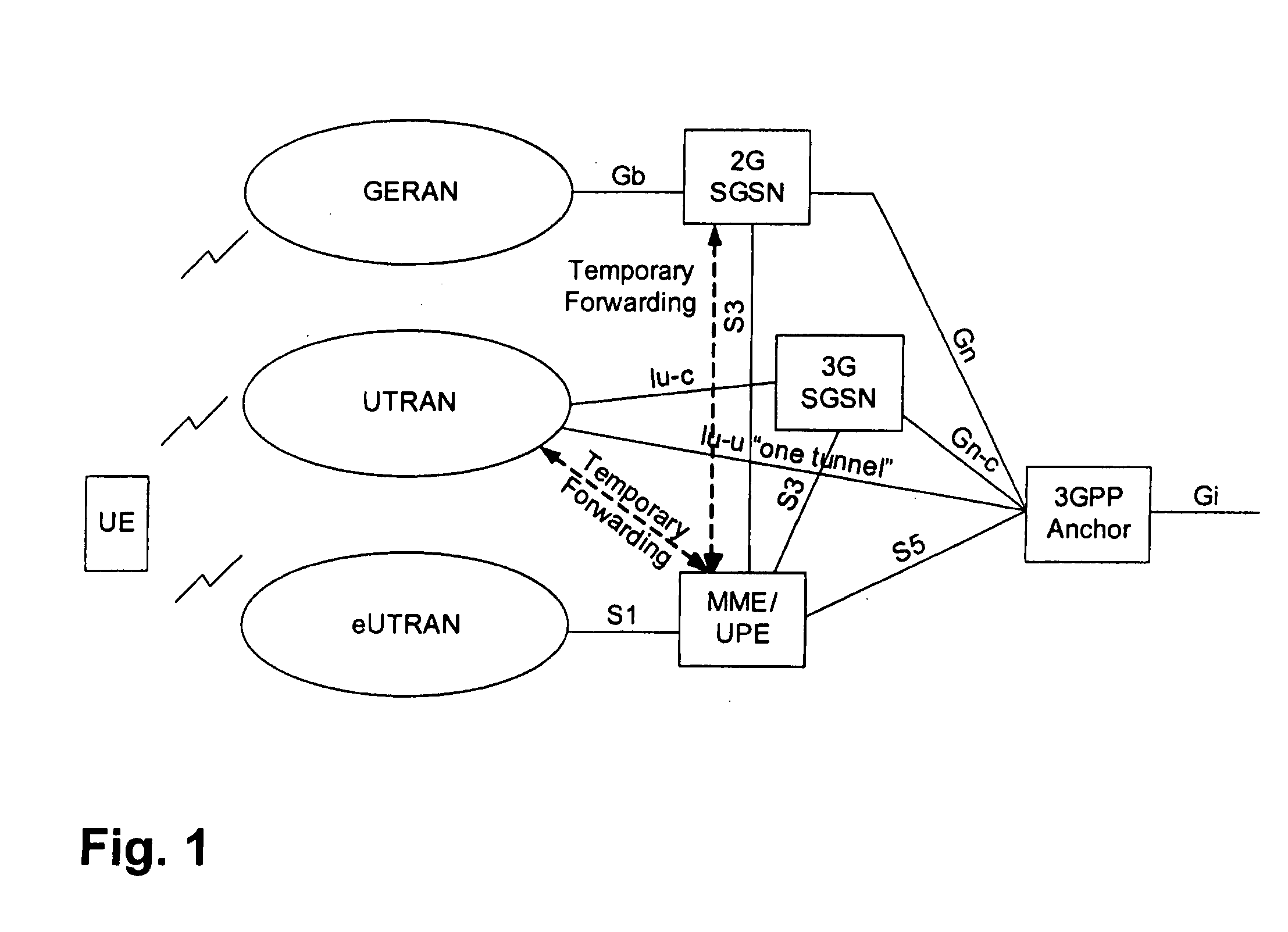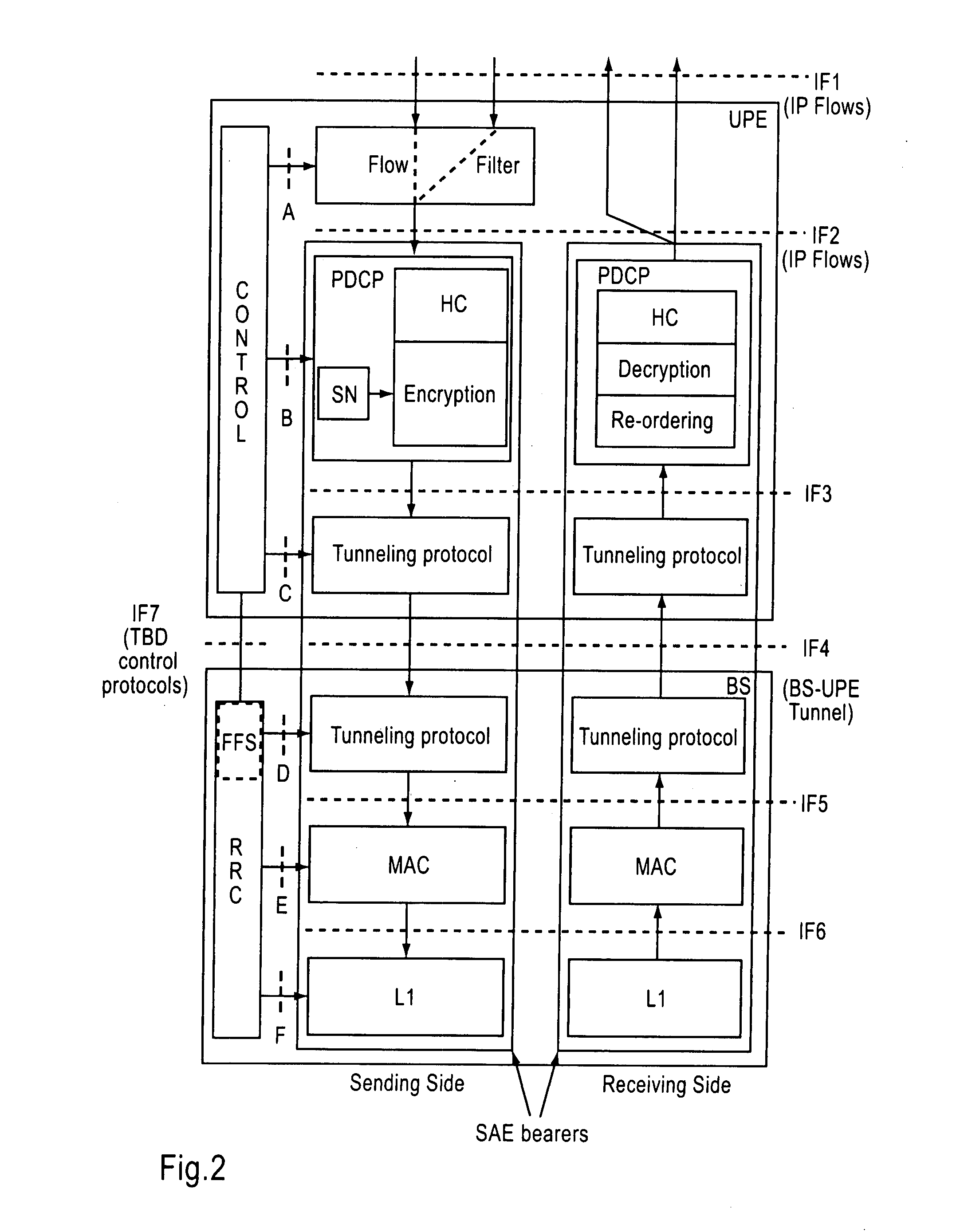Method, a system and a network element for performing a handover of a mobile equipment
a mobile equipment and network element technology, applied in the field of mobile equipment handover, can solve the problems of unnecessary consumption of transport network capacity, delay, downlink packets, etc., and achieve the effect of saving transmission resources
- Summary
- Abstract
- Description
- Claims
- Application Information
AI Technical Summary
Benefits of technology
Problems solved by technology
Method used
Image
Examples
Embodiment Construction
[0019]From end user perspective there is a need to have a lossless / seamless handover in order to avoid disturbing breaks in the ongoing service(s) so that the handover performance is sufficient e.g. for continuity in a VoIP (voice over IP) call.
[0020]In order to achieve the aforementioned and further objects, in accordance with a first aspect, there is provided a method for performing a handover of a mobile equipment from a source network to a target network in a mobile telecommunication system, wherein data, which may be transferred via the source network to the mobile equipment when it is linked to the source network, are going to be buffered in a network element in case a need for a handover arises, and the data buffered in the network element are forwarded from the network element to the target network for transferring them to the mobile equipment after it has been linked to the target network.
[0021]In accordance with a second aspect, there is provided a system for performing a ...
PUM
 Login to View More
Login to View More Abstract
Description
Claims
Application Information
 Login to View More
Login to View More - R&D
- Intellectual Property
- Life Sciences
- Materials
- Tech Scout
- Unparalleled Data Quality
- Higher Quality Content
- 60% Fewer Hallucinations
Browse by: Latest US Patents, China's latest patents, Technical Efficacy Thesaurus, Application Domain, Technology Topic, Popular Technical Reports.
© 2025 PatSnap. All rights reserved.Legal|Privacy policy|Modern Slavery Act Transparency Statement|Sitemap|About US| Contact US: help@patsnap.com



